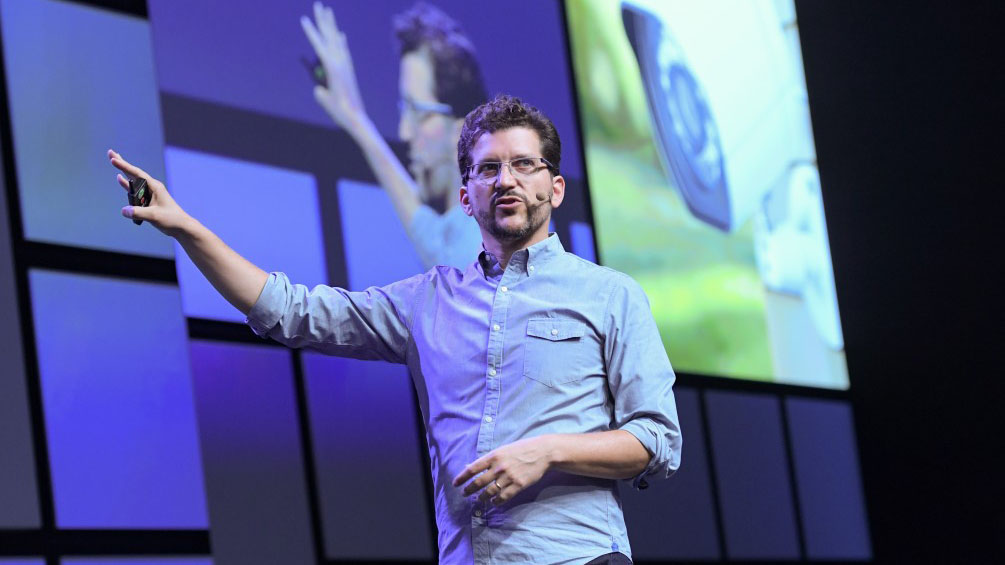Amazon: ‘Soon we won’t talk about the smart home but a world of smarts’
Home isn't just where the smart is

“The true center of the smart home? I don’t think that’s something we need to debate. What unlocks all of it is voice.”
Daniel Rausch, Vice President, Smart Home, at Amazon is confident speaking to TechRadar before his recent big keynote at IFA 2018. Rausch has been chosen by Europe’s big tech show to talk about all things smart home and it’s something that Amazon knows all about.
Since Alexa’s arrival - Amazon’s voice assistant - we have seen homes turn from dumb to smart, at a low cost, to the point where some 50 million people have access to voice control (whichever your OS preference) in the US.
This has happened in just “three and change” years, according to Rausch, who remembers not-so-long ago when the smart home was very different.
“The so-called smart home was a segment that was taking off for decades. Starting in the 1980s with the X10 [home automation protocol],” notes Rausch.
"The sea change of the simplicity of voice control with Alexa means a faster pace of adoption."
Daniel Rausch, VP, Smart Home
“More recently, before the simplicity of voice control, it was your phone. But that turned out to be for just one person in the house.
“You would have to unlock your phone, go through the mess of apps, find the right one, open it, find the right device and then you would turn on the light bulb. You could have just walked across the room and tapped the switch.
Get daily insight, inspiration and deals in your inbox
Sign up for breaking news, reviews, opinion, top tech deals, and more.
- The best Alexa Skills and commands: the ultimate Amazon Echo tips and tricks
“It wasn’t easy for customers,” he admits. “The sea change of the simplicity of voice control with Alexa means a faster pace of adoption because it is actually easier. It is the same across the whole heterogeneous range of devices and it is just that easy. That was the key pivot that unlocked the smart home.”
20,000 Alexa products
That range of devices has proliferated in the last year. According to Rausch, over 50 products were announced at IFA - either with Alexa built in (Alexa-enabled products) or products Alexa can control - and the diverse spread was telling. There were Alexa-integrated PCs, lights, fridges... and even some speakers.
“It took us three years to get to 4,000 Alexa-compatible devices,” said Rausch. “Within the last nine months that number has gone from 9,000 to 20,000.”
The sheer amount of new product has meant that Amazon has had to have a robust system for getting manufacturers on board, and fast.

“We’ve created software development kits, hardware development kits, microphone arrays, give different options for supply chain partners, ODMs, different tiers in the supply chain,” reveals Rausch.
“There’s an equal amount of effort going into making it easier for Alexa to control products, too.
“We have got technology like our smart home APIs that allow Alexa to interface with many products for our customers. That’s experience huge growth as well.”
The speed of concept to product was highlighted recently and the fruits of this was showcased at IFA.
“There is a great story about an Anker product that was accelerated to seven months’ delivery [Anker announced a number of Alexa-integrated devices at IFA 2018]. That’s from the first concept, the first phone call, to being available for market.
“We have built up a lot of technology to make it easier for companies to build it into the product.”
Rausch makes a good point, but the mass adoption of Alexa has spurred many to question the security implications of this and whether the voice technology works perfectly for every device - particularly those where Alexa isn’t baked in. (Last year's Amazon speaker hack being a great example.)
Language no barrier
This speed of release and breadth of products is something Amazon’s biggest rival in the voice space, Google, is also pushing at the moment.
It chose IFA to announces that Google Assistant was now bilingual, understanding two languages at once without having to flip between these languages in the settings.
"The so-called smart home was a segment that was taking off for decades."
Daniel Rausch, VP, Smart Home
While this particular feature isn’t available yet through Alexa, Rausch was keen to explain just how much work Amazon is doing in this space.
“Alexa has been ‘multilingual’ for some time,” notes Rausch. “Customers can pick a language - we have all different dialects of English, German, French... we have announced Spanish is coming and Italian. Stay tuned for more - we aren’t here to speculate on future features but we love seeing the product in all these places.”

Having Alexa in all these places does bring us to the question of: where does Amazon and - more pertinently Alexa - go next?
“The sky’s the limit - your vacuum cleaner, door, security system, your lawn. Everything you can imagine inside the home. You will also see that Alexa will just be embedded in more devices and customers will stop thinking about talking to a device per se. It will become more about speaking at large.”
It’s already out and about, beyond the home, too. There’s Alexa in the car (Ford, Toyota, SEAT have all made announcements about this), there’s Alexa for hospitality where in certain hotels guests can get room service and towels through Alexa.
Alexa for business is looking to do away with voice calling systems of old - more than 700 of these are used in Amazon’s own conference rooms already.
“We knew right away, from the response, that customers would want to connect with Alexa anywhere,” says Rausch. “We knew early on that we would want any developer to use Alexa and wanted Alexa to be able to do anything. So we built the skills kits and APIs so devs could extend capabilities.
“We soon won’t be just talking about the smart home but a world of smarts.”
Marc Chacksfield is the Editor In Chief, Shortlist.com at DC Thomson. He started out life as a movie writer for numerous (now defunct) magazines and soon found himself online - editing a gaggle of gadget sites, including TechRadar, Digital Camera World and Tom's Guide UK. At Shortlist you'll find him mostly writing about movies and tech, so no change there then.
